Bath Buns are rich, sweet buns laced with candied peel and dried fruits and topped with nib sugar or raisins. These buns are best when served with hot tea or coffee.
As a fan of Jane Austen and as an afternoon tea aficionado, Bath Buns could be a confusing topic. The Bath Buns that Jane Austen was fond of in the late 18th and early 19th century and what is served as ‘Bath Buns’ today are two different things. To be sure, they are buns, but they are two different types of buns. Unlike the sugar and dried fruit bombs that are today’s Bath Buns, the Jane Austen version appears to have more spice and less sugar. Here’s an excerpt of an 18th– century recipe (courtesy of several websites including the Jane Austen one):
Bath Buns: Rub half a pound of butter into a pound of flour, and one spoonful of good barm (the froth on fermenting malt liquor used for leavening), warm some cream, and make it into a light paste, set it on the fire to rise, when you make them up to take four ounces of caraway comfits, work part of them in, and strew the rest on the top, make them into a round cake, the size of a French roll, and bake them on sheet tins, and send them in hot for breakfast. (Elizabeth Raffald, The Experienced English Housekeeper, 1786)
I love the Bath Bun, having tasted it in Bath when we were living in Bristol. We visited the quaint and charming tea shop, also called the ‘The Bath Bun’ which is set behind Bath Abbey. The legend behind the sugar and fruit Bath Bun was that it was invented by Dr. William Oliver to refresh (reward) his rheumatic patients following their treatment.
What is Sally Lunn?
The Bath Bun also gets confused with that other Bath delectable: the Sally Lunn. To be fair, they are both yeasty buns but the Sally Lunn is more like a lightly sweet, overly large (it’s about 6 inches in diameter) brioche with a soft dome. The Bath Bun is a more compact sugared bun that has a sugar bomb baked into the base, crushed sugar sprinkled at the dome, and garnished with currants or raisins. I shall reserve the story behind the Sally Lunn for a later time but the stories are more filled with yeasty intrigue than the bun.
Whether you choose to believe the stories or not, it is fair to say that the love story between the sweet tooth and these yeasty buns started in the 17th or 18th century and has endured and evolved. Whether it was Jane Austen or JK Rowling, the Bath Bun has left an indelible mark on food culture along with that most notable British contribution to world food culture: afternoon tea.
You can have a Bath Bun for your breakfast or with your midmorning coffee, but I can tell you that my favorite meal of the day is afternoon tea and NOTHING beats this combination of sweet buns and sharp strong tea! This recipe is from a handout while we were sightseeing in Bath many years ago.
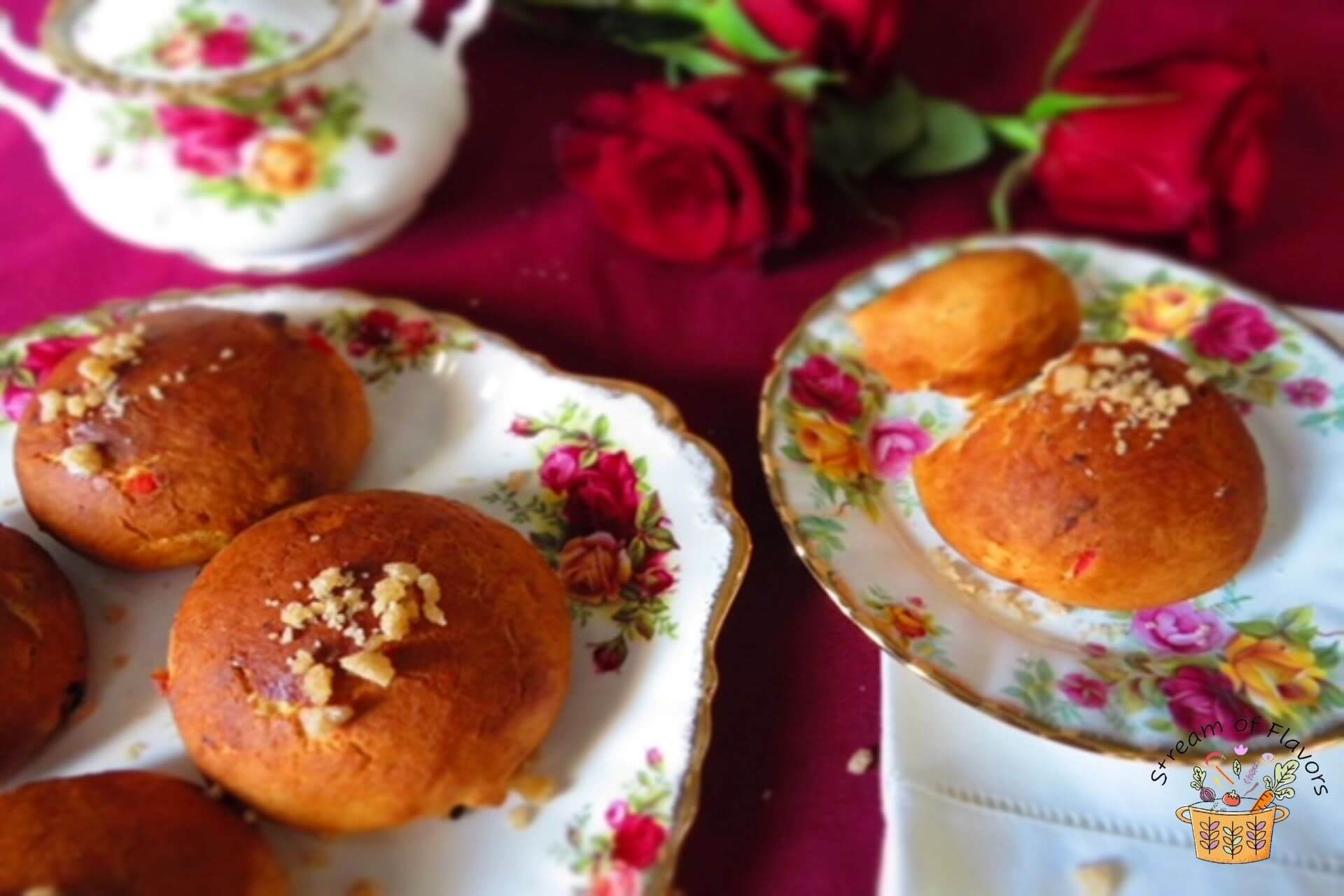
How to make Bath Buns:
- Sift the flour with salt into a warmed bowl. Rub the butter into the flour using your finger tips or a pastry cutter until the flour resembles bread crumbs.
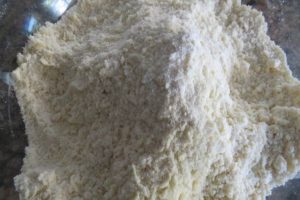
2. Mix sugar, yeast, and one tablespoon of warm water in a bowl. Let it froth for 5 minutes. Add the beaten egg and warm milk to the bowl and whisk until combined. Make a well in the flour and tip the liquid ingredients and beat until smooth and elastic. Knead for 15 minutes or for 10 minutes in a food processor.
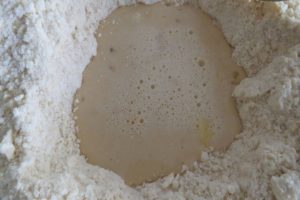
3. Turn the dough into greased bowl and cover with a damp cloth. Set the bowl in a warm place and allow it to double in bulk for 50 minutes.
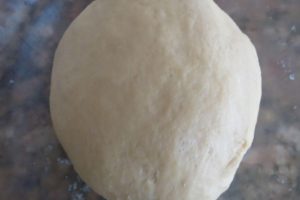
4. Preheat oven to 425 degrees F. Beat in the raisins or sultanas, chopped peel, and lemon zest. Cover the dough with a damp cloth and let them prove for 30 minutes.
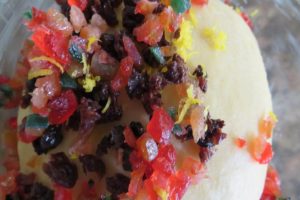
5. Divide the dough into 8 balls and knead and stretch the balls on a floured surface. Flatten the tops and place the buns two inches apart on a greased baking tray. Brush with egg wash or cream and let the buns rise again for 15 minutes.
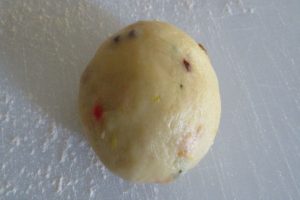
6. Bake the buns for 20 minutes. Sprinkle nib sugar after baking the buns. Serve with a cup of hot tea.
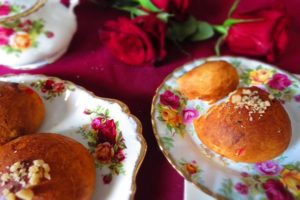
1. A steamy oven is ideal for baking Bath Buns. Place a baking tin filled with boiling water on the lower rack in the oven.
2. Prove the buns in a warm place or turn on the oven to the lowest settings for a couple of minutes (and then turn it off) and place the covered dough in it.
Other British recipes to try for breakfast and tea:
Bath Buns
Equipment
- Mixing bowls, baking tray
Ingredients
- 12 ozs all-purpose flour
- a pinch salt
- 5 ozs butter unsalted
- 4 ozs granulated sugar
- ¾ oz active yeast
- 2 egg
- ¼ cup whole milk
- 2 oz raisins
- 1 oz candied peel
- 1 tsp lemon zest
- 1 tbsp nib sugar
Instructions
- Sift the flour with salt into a warmed bowl. Rub the butter into the flour using your finger tips or a pastry cutter until the flour resembles bread crumbs.
- Mix sugar, yeast, and one tablespoon of warm water in a bowl. Let it froth for 5 minutes. Add the beaten egg and warm milk to the bowl and whisk until combined. Make a well in the flour and tip the liquid ingredients and beat until smooth and elastic. Knead for 15 minutes or 10 minutes in a food processor.
- Turn the dough into greased bowl and cover with a damp cloth. Set the bowl in a warm place and allow it to double in bulk for 50 minutes.
- Preheat oven to 425 degrees F. Beat in the raisins or sultanas, chopped peel, and lemon zest. Cover the dough with cloth and let them prove for 30 minutes.
- Divide the dough into 8 balls and knead and stretch the balls on a floured surface. Flatten the tops and place the buns two inches apart on a greased baking tray. Brush with egg wash or cream and let the buns rise again for 15 minutes.
- Bake the buns for 20 minutes. Sprinkle nib sugar before or after baking the buns. Serve with a cup of hot tea.
Notes
- Allow enough time for the buns to prove in a warm place.
- Use one tablespoon of warm water to allow the yeast to become frothy.
Nutrition


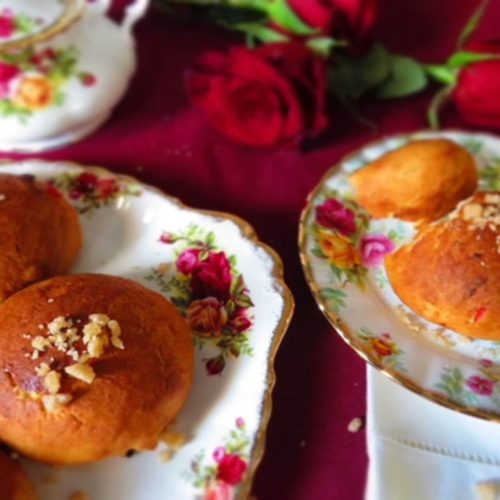




















Turned out wonderful! Thanks for sharing 🙂
Good to know Archana, thanks!
What kind of candied peel did you use?
I used the mixed candied peel which is similar to the variety used in fruit cakes.
Tasted wonderful!
Great for a teatime snack!
My wife and I love these as a snack, thanks Kanchan!
Could you say how much water is supposed to be mixed with the yeast and sugar? It isn’t listed. Thanks!
Hi, please add one tablespoon of warm water and mix the yeast and sugar in it. Let it froth for 5 minutes.